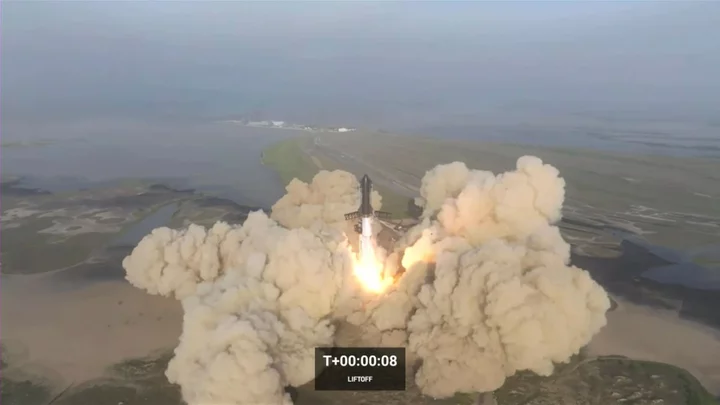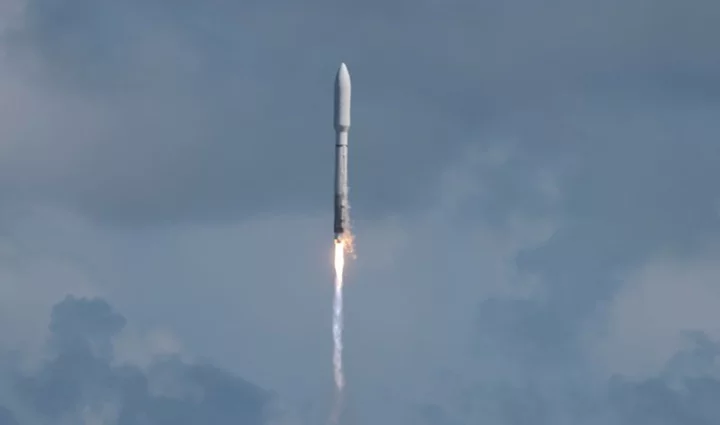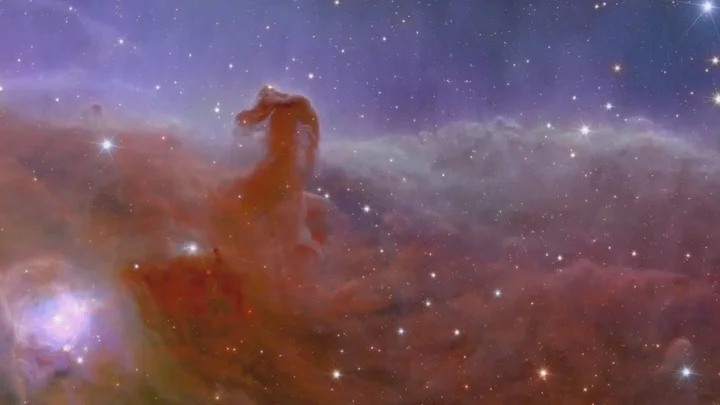
Fortnite x LEGO Collaboration Release Date Finally Confirmed
The Fortnite x LEGO collaboration is finally coming on Thursday, Dec. 7, 2023, at 9 a.m. ET as its own game mode with exclusive LEGO-themed rewards.
2023-11-17 00:53

PlayStation 5 Stock Checker GameStop 2023
PlayStation 5 buyers can save when they shop at GameStop.
2023-11-17 00:45

Leaked Fortnite x Invincible Skins Reveal Omni-Man, Atom Eve in Fortnite OG
Check out all the leaked Fortnite Invincible skins, including Omni-Man, Invincible, and Atom Eve, coming to Fortnite OG.
2023-11-17 00:45

Glencore Bets on US Love of Coal With New Fossil Fuel Giant
Glencore Plc is preparing to unleash a new coal supermajor on the New York market that would –
2023-11-17 00:20

SpaceX Starship: World’s biggest rocket to launch again after first attempt ended in spectacular explosion
SpaceX is about to launch the world’s biggest and tallest rocket once again. Elon Musk’s private space company has got its final approval from US federal regulators to launch Starship on Friday morning local central time. The first launch of the rocket initially appeared to go well, with the rocket launching up into the sky and preparing for its journey around Earth. But minutes later the spacecraft began to tumble and soon after that it blew up in a vast explosion. Since then, SpaceX has been working to comply with regulators including aviation authorities as well as those tasked with protecting the environment and wildlife around its base in Texas. The Federal Aviation Administration issued its license Wednesday, noting that SpaceX has met safety, environmental and other requirements to launch again. Elon Musk's rocket company said it was targeting Friday morning. After the self-destruct system blew up the rocket over the Gulf of Mexico, SpaceX made dozens of improvements to the nearly 400-foot (121-meter) rocket and to the launch pad, which ended up with a large crater beneath it. SpaceX has a $3 billion NASA contract to land astronauts on the lunar surface as early as 2025, using the spacecraft. A month ago, the FAA completed its safety review of the upcoming Starship launch. It needed more time to wrap up its environmental review. No one was injured in the first attempt, but the pad was heavily damaged as the rocket's 33 main engines ignited at liftoff. The U.S. Fish and Wildlife Service later reported that concrete chunks, steel sheets and other objects were hurled thousands of feet (hundreds of meters) from the pad. It also said a plume of pulverized concrete sent material several miles (up to 10 kilometers) away. Wildlife and environmental groups sued the FAA over what they considered to be the FAA’s failure to fully consider the environmental impacts of the Starship program near Boca Chica Beach. Plans call for the test flight to last 1 /1/2 hours and fall short of a full orbit of Earth. The spacecraft would go eastward, passing over the Atlantic, Indian and Pacific oceans before ditching near Hawaii. Nothing of value will be on board. Additional reporting by agencies Read More The world’s most powerful rocket should launch imminently, Elon Musk says Robot hand with bones, ligaments and tendons 3D printed in world first Users of iPhones can now check bank balance from Wallet app
2023-11-17 00:15

Amazon's prototype Kuiper satellites operate successfully
Amazon.com said on Thursday its two prototype satellites for its planned Kuiper internet network have been operating successfully,
2023-11-16 23:59

Here's When the Fortnite Festival Concert is Coming to Chapter 5
The leaked Fortnite Festival concert starts on Saturday, Dec. 9, 2023, at 9 a.m. ET in Chapter 5 with free rewards and possibly live music.
2023-11-16 23:56

Biggest-ever simulation of the universe could finally explain how we got here
It’s one of the biggest questions humans have asked themselves since the dawn of time, but we might be closer than ever to understanding how the universe developed the way it did and we all came to be here. Computer simulations are happening all the time in the modern world, but a new study is attempting to simulate the entire universe in an effort to understand conditions in the far reaches of the past. Full-hydro Large-scale structure simulations with All-sky Mapping for the Interpretation of Next Generation Observations (or FLAMINGO for short), are being run out of the UK. The simulations are taking place at the DiRAC facility and they’re being launched with the ultimate aim of tracking how everything evolved to the stage they’re at now within the universe. The sheer scale of it is almost impossible to grasp, but the biggest of the simulations features a staggering 300 billion particles and has the mass of a small galaxy. One of the most significant parts of the research comes in the third and final paper showcasing the research and focuses on a factor known as sigma 8 tension. This tension is based on calculations of the cosmic microwave background, which is the microwave radiation that came just after the Big Bang. Out of their research, the experts involved have learned that normal matter and neutrinos are both required when it comes to predicting things accurately through the simulations. "Although the dark matter dominates gravity, the contribution of ordinary matter can no longer be neglected, since that contribution could be similar to the deviations between the models and the observations,” research leader and astronomer Joop Schaye of Leiden University said. Simulations that include normal matter as well as dark matter are far more complex, given how complicated dark matter’s interactions with the universe are. Despite this, scientists have already begun to analyse the very formations of the universe across dark matter, normal matter and neutrinos. "The effect of galactic winds was calibrated using machine learning, by comparing the predictions of lots of different simulations of relatively small volumes with the observed masses of galaxies and the distribution of gas in clusters of galaxies," said astronomer Roi Kugel of Leiden University. The research for the three papers, published in the Monthly Notices of the Royal Astronomical Society, was undertaken partly thanks to a new code, as astronomer Matthieu Schaller of Leiden University explains. "To make this simulation possible, we developed a new code, SWIFT, which efficiently distributes the computational work over 30 thousand CPUs.” Sign up for our free Indy100 weekly newsletter How to join the indy100's free WhatsApp channel Have your say in our news democracy. Click the upvote icon at the top of the page to help raise this article through the indy100 rankings
2023-11-16 23:53

Where to Buy a Steam Deck on Black Friday 2023
Steam Decks are getting price cuts! Here's where you can buy one.
2023-11-16 23:51

German Finance Chief Sees Budget Ruling as “Turning Point”
Finance Minister Christian Lindner said Wednesday’s ruling by Germany’s top court curbing the use of off-budget special funds
2023-11-16 23:50

Redwood inks long-term EV battery materials supply deal with Toyota
By Paul Lienert Redwood Materials has signed a long-term contract to supply Toyota Motor with recycled materials for
2023-11-16 22:53

Carbon-Capture Firm Deep Sky Gets $55 Million of Fresh Capital
A Canadian startup raised $55 million from venture capital firms and governments to begin a carbon-capture plant in
2023-11-16 22:47
